
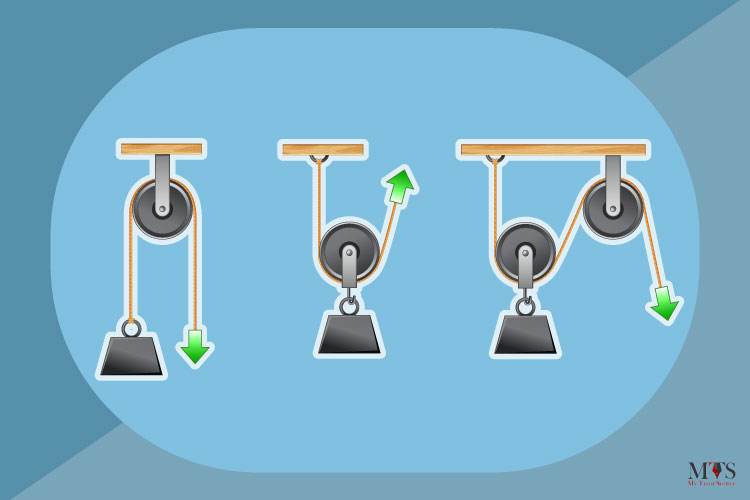
A pulley gives you a mechanical advantage, yet it is simple. It is made up with the help of a wire or chain, a rope, a grooved wheel with two raised edges. It is used to lift heavy objects, change the direction of the force and move extremely heavy objects to places. However, the size of the wheel or rope, chain, or belt varies depending on the force requirement. The invention of pulleys has made man’s work quite easier, and the credit goes to its inventor, Archimedes. He didn’t actually invent the pulley, but he did improve the pulley system of his time and developed different systems of compound pulleys.
Pulley is one of the most used everyday machines. Whether you stay at home all day or go to work, you use pulley systems in your everyday life without even knowing. Before jumping into the types, usage, and working of the pulley, here is a definition of it:
“A pulley is a mechanical component that helps transfer motion and power through a wheel turned by chain, rope, cord, or belt.”
Pulleys are of the following types:
A fixed pulley changes the direction of the input force but does not change the amount of force applied to it. Fixed pulleys are usually attached to a stationary object above the load, which means its axle and wheel will stay in one place. The mechanical advantage of a fixed pulley is 1.
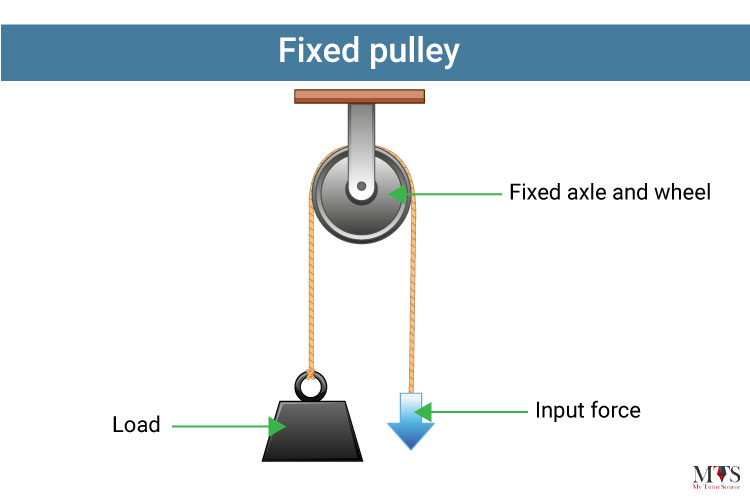
For example
Perfect examples of flexible pulleys are:
A movable pulley does not change the direction of the force but increases the amount of force applied. Moving pulleys are attached to the loads, which means its axle is in a movable block. They made the load feel much lighter, and they have a mechanical advantage of two.
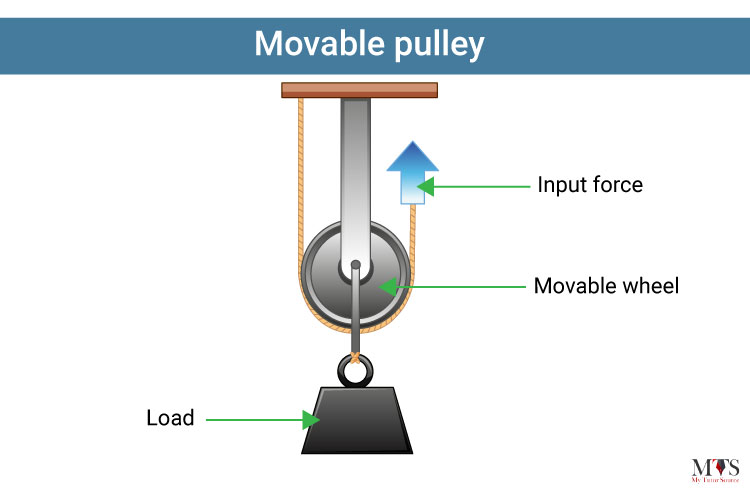
For example
Examples of the movable pulleys include:
Compound pulleys are also known as combination pulleys, and they are made up of both fixed and movable pulleys. Together, they let you change the direction of force and make the weight feel lighter. The size of the wheel and the length of the rope, chain, and belt of this simple machine are designed to lessen the efforts.
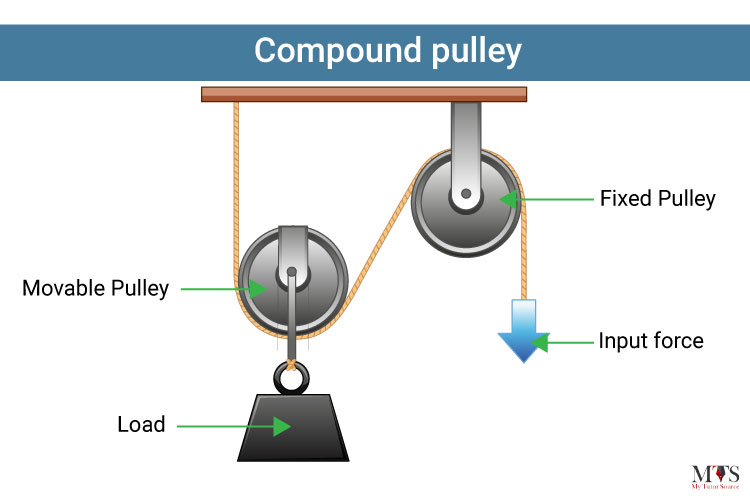
For example:
A block and tackle pulley comprise several movable pulleys, and fixed pulleys are arranged parallel. They are known as a specific form of compound pulleys where movable pulleys are aligned parallel with movables and fixed pulleys are fixed. Moreover, the mechanical advantage of the block and tackle pulley is 3.
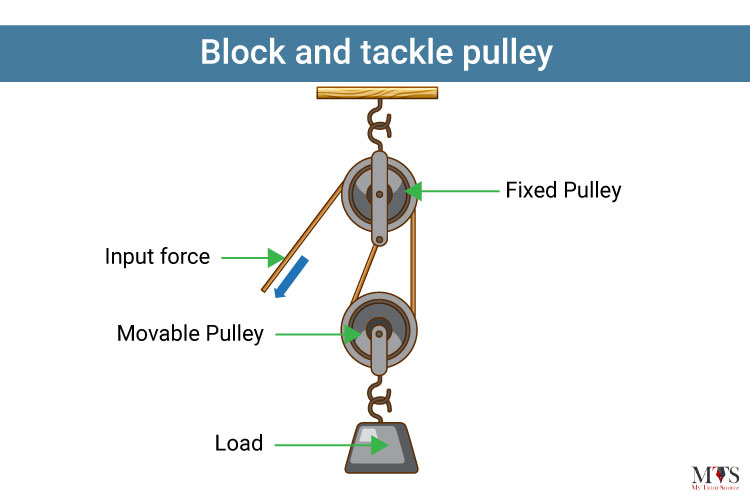
For example
Overall, block and tackle systems have two types of pulleys: fixed and moveable, and the mechanical advantage of all their examples varies.
A cone pulley is made up of multiple pulleys. They are simple in design, cost less, and have larger circumferences. They are called cone pulleys because multiple pulleys form a cone shape at a point. Its small wheel requires small circumferences and produces less work in the result. Likewise, big wheels will have a larger circumference. Moreover, the operator of cone pulleys can alter the speed of its movement.
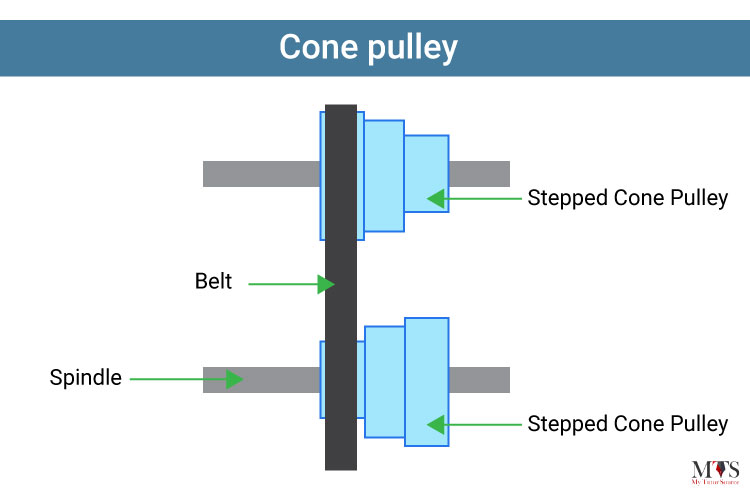
For example
Technical knowledge or applications apart, we use pulleys in our everyday lives and have made work easier. A man uses almost all types of pulleys in a single day. Here are a few examples of pulleys we use in our everyday life:
Elevators and escalators utilize pulley systems. Multiple pulleys are used to make one elevator or escalator, and they have made our life easy.
Pulley systems are used for the development of exercise machines. They are used to make gym or exercise equipment’s weight lifting and movement easier, effortless, and safe. Without pulley systems, exercise equipment cannot operate.
Pulleys are used in blinds and curtains to pull them down and up easily. Also, pulleys lift the curtains and drop them down in theatres.
Pulleys hang plant pots or flower baskets with the roof or walls as you can conveniently lower them to water or cleaning.
Since ancient times, pulleys have collected water from the well. In fact, some rural areas still use the grooved wheel, moveable pulleys to pull the water bucket out of the well.
Look in your kitchen, and you will find different applications of pulleys hanging around, which can be lowered for use, for example, hanging charts, dumbwaiters, or lights.
To your surprise, the clothes are also made with the help of pulleys as they are used in sewing machine motors.
We can easily slide the doors because of the types of pulleys used. Even the garage doors have pulleys to make opening and closing effortless. Sliding doors are mostly used as bathroom doors or for porch areas.
Rock climbers take the help of pulley systems to climb the rocks safely and easily. Flexible material, different pulleys, grooved wheels are used to balance their heavyweights and the direction of the force.
Laborers use crane pulleys to move extremely heavy material or objects up and down the building. Moreover, some crane pulleys are used to collect the debris.
Fishing couldn’t be possible without pulleys. The enhancement of the grooved wheel in the fishing rod helps you catch the fish.
Without pulleys, sailing boats cannot move the sails or take them places. Multiple pulleys, grooved wheels, or grooved rims are used to apply force in a direction.
The motors used in the washing machines use belts connected by pulleys because they provide locomotion to move up and down.
The hanging chandelier is also made up of pulley systems, as pulleys let you lower the chandelier easily for cleaning and repairing purposes. Both fixed and movable pulleys are used in it.
Moreover, pulley systems are also used in analog clocks, electric fans, clotheslines, engines, timing belts in the car, and many other things. Pulleys significantly play an effective role in the existence of tools and machines.
The parts of the pulley are:

Here,
As discussed above, the pulley is a simple machine extensively used to lift heavyweights. There are many other fixed and movable pulleys, and their structure, working, functions, and applications also differ. Some are technically hard to understand, and if you have any queries about pulleys types or examples, you can take the help of our physics tutor anytime. Our tutors are just a click away to guide you and work on your academic knowledge and grades. Take a free trial now and experience learning with the best physics tutor.